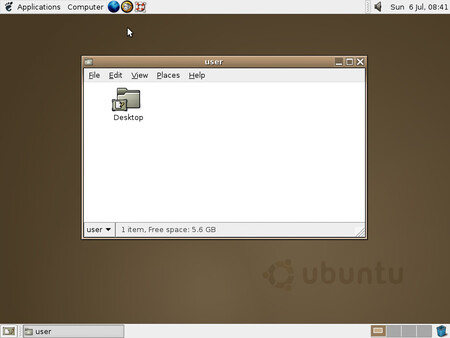It has been exactly 20 years since the first version of Ubuntu was released. On October 20, 2004, Canonical launched Ubuntu 4.10. It was a distribution whose mission was encourage Linux adoption. Although the operating system created by Linus Torvalds in 1991 was used in a wide variety of applications, such as servers and industrial systems, it was relatively removed from the general public.
At that time, Microsoft dominated the global desktop operating system market. Windows XP, with its new graphical interface and functions, broke through previous versions of the system, like Windows 98 and Windows 95. If we go back in time, the top 3 of the most popular Linux distributions before the launch of Ubuntu (2003) It was made up of Mandriva, Red Hat and Knoppix.
Mandriva tried break down one of the barriers that most limited the access of users without technical knowledge to Linux. Implemented an installation wizard that offered a intuitive guide throughout the entire process. Red Hat was more geared toward professional environments. And Knoppix offered the possibility of using the system without having to perform an installation thanks to a feature called Live CD.
Ubuntu, the version of Linux that wanted to conquer the world
These and other Linux distributions seemed to be on the right path, but a universe away still separated them from the average user. Mark Shuttlewortha businessman of South African origin, wanted Ubuntu to become a success. But that meant combining a lot of pieces. It was not only about offering a friendly distribution, but also about financing its development over time.
Since its beginning, Ubuntu has been based on Debianwhich is the second oldest Linux distribution in the world that continues to be developed and stands out for its robustness. What began as a tremendously ambitious project, but maintained by a small communitygrew meteorically over the years, adding collaborators who have been essential to its current status.
The first Ubuntu Developer Summit took place shortly after the initial launch in Mataró, Spain, which came accompanied by the founding of the first local communities that appeared in Portugal, Italy, France and Japan. In 2005, about a year after Ubuntu appeared on the scene, the distribution topped the list of the most visited of DistroWatch.comsurpassing Mandriva and SUSE.

Ubuntu 4.10
One of the strategies that Shuttleworth used to publicize Ubuntu was to launch the program Ubuntu ShipIt. I’m sure many of you will remember that in the early days of distribution it was possible order distribution CD. The album was shipped completely free of charge to almost anywhere in the world. And it came accompanied by a sticker so you could show off the distribution.
Certainly, this was a possibility that arose directly from Ubuntu’s philosophy. Its name comes from an African word that means “humanity towards others.” The original slogan of the project, in fact, was Linux for Human Beings (Linux for humans). So you could access Linux for your computer, regardless of your economic situation or whether or not you had Internet.


Ubuntu 11.10
In 2006 Ubuntu 6.06 LTS (Dapper Drake) arrived, the first version with long-term support of the distribution, followed by 64-bit versions, and derived versions for specific uses, such as Kubuntu, which uses the desktop environment KDE rather GNOMEand Edubuntu, designed for use in educational environments. Over time, Ubuntu even landed on the Windows Store, something unthinkable in the past.
If you came from a Microsoft or Apple operating system, Ubuntu had become one of the best options to make the jump to Linux. You were faced with a robust distribution with many interesting features. It had been conceived with the user experience in mind, something that you could detect from the installation process to the user interface. It even had its built-in software store.


Ubuntu 23.10
Compatibility and installation of applications became very simple. Did you want to use Slack? Well you could do it. Like Steam, Visual Studio, Telegram, Spotify, and many applications that many Windows and macOS users usually use. All this with versatility offered by a Linux system. If you wanted more, you just had to get to work to get the most out of the operating system.
Canonical has kept its promise of offering the system for free, although the company offers paid solutions for professional customers. Ubuntu Profor example, is free to use up to five computers in the same organization. Once this limit is exceeded, it is necessary to check out to purchase a subscription that offers greater security, management tools and extended support.

Depending on how you look at it, Linux still has a long way to go, but it has achieved notable growth in recent years. At the beginning of 2020, this operating system had a share of the desktop computer market 1.9%. Things have changed a lot. In September 2024, according to Statista, market share is 4.5% (not counting the 2.2% of Chrome OS).
Images | Canonical (1, 2) | Shizhao | Kenny Strawn (Wikimedia Commons)
In Xataka | Microsoft’s latest update is a disaster for Linux users. Prevents them from enjoying dual boot















Add Comment